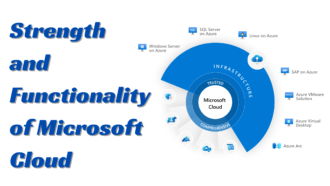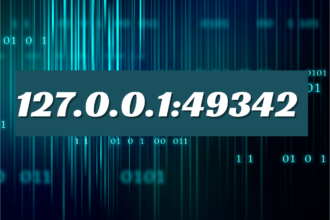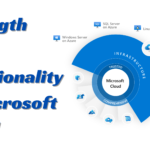Decoding the Future: A Deep Dive into Serverless Functions
- 1 Core Concepts of Serverless Functions in Software Alchemy
- 2 Real-World Applications of Serverless Functions
- 2.1 E-commerce Optimization:
- 2.2 IoT Integration:
- 2.3 Data Manipulation Tasks:
- 2.4 Scheduled Task Automation:
- 3 Functions-as-a-Service (FaaS) vs. Serverless Functions
- 3.1 Functions-as-a-Service (FaaS)
- 3.2 Serverless Functions
- 3.3 Choosing Between FaaS and Serverless Functions
- 4 Implementation: Best Practices for Serverless Functions
- 4.1 Keep Functions Small and Focused
- 4.2 Leverage Third-Party Services
- 4.3 Optimize Memory Allocation
- 4.4 Implement Security Measures
- 4.5 Monitor and Debug Actively
- 4.6 Version Control and Deployment Strategies
- 5 The Transformative Power of Serverless Functions
In the ever-evolving digital transformation landscape, serverless functions have emerged as the catalysts for reshaping how we conceive and deploy applications. This guide dives deep into serverless computing, demystifying the core concepts and unveiling the real-world applications that have revolutionized industries. We’ll navigate the advantages of embracing serverless functions, exploring impactful case studies from leading brands. Moreover, we’ll decipher the nuanced differences between Functions-as-a-Service (FaaS) and broader serverless functions, shedding light on their distinct roles in modern development.
This guide aims to be your go-to resource for stepping into the future of software development, where serverless functions empower developers to code without constraints, ensuring optimal performance, scalability, and efficiency.
Core Concepts of Serverless Functions in Software Alchemy
The fundamental principle guiding serverless functions is their stateless and ephemeral nature. Stateless, as these functions operate without retaining data, and short, as they exist only for the brief duration of execution. This unique characteristic ensures rapid activation and shutdown, optimizing resource utilization and ushering in a new era of cost-effectiveness.
Imagine crafting a code snippet tailored for a specific purpose, hosting it on cloud infrastructure, and witnessing its execution on-demand in response to predefined triggers. This magic unfolds the moment a serverless function is summoned into action. This spellbinding combination of statelessness and ephemerality makes serverless functions a beacon of efficiency in the ever-evolving landscape of software architecture.
The constraints of traditional servers do not bind these functions; instead, they dance gracefully in the cloud, responding to events like the opening scene of a well-choreographed ballet. The magic doesn’t stop there – serverless functions find applications across diverse scenarios, from processing e-commerce orders to orchestrating the intricate dance of IoT device data.
Advantages of Embracing Serverless Functions in Modern Development
One of the prime advantages lies in the liberating nature of serverless functions. Developers are unshackled by the burdensome task of infrastructure management, allowing them to focus solely on crafting impeccable code. These functions’ stateless and ephemeral characteristics ensure quick activation and shutdown, optimizing resource utilization and cost-effectiveness.
Scalability becomes an inherent strength when one embraces serverless functions. These functions seamlessly scale based on demand, effortlessly handling a surge in traffic or a spike in user interactions. The traditional concerns of scaling infrastructure become relics of the past as serverless architecture adapts dynamically to the ebb and flow of application usage.
Cost-effectiveness is a hallmark of serverless functions. Unlike traditional server models, where costs are incurred regardless of usage, serverless platforms charge based on actual execution. Paying only for the resources consumed during function execution translates to significant cost savings and efficient resource allocation.
Developers are granted the freedom to code in multiple languages, breaking the chains of language constraints. Serverless functions enable polyglot development teams to work seamlessly with the languages they know best, fostering a diverse and collaborative coding environment.
Real-World Applications of Serverless Functions
Serverless functions, designed for single-purpose tasks, resonate in myriad scenarios, showcasing their adaptability and efficiency.
E-commerce Optimization:
Serverless functions are pivotal in e-commerce, optimizing order processing and inventory management processes. With the ability to seamlessly scale based on demand, these functions ensure that e-commerce platforms can handle surges in traffic during peak periods, offering a smooth and responsive shopping experience.
IoT Integration:
The Internet of Things (IoT) landscape benefits significantly from the agility of serverless functions. These functions can automatically filter, log, and respond to data from IoT sensors and devices. The stateless and ephemeral nature ensures that serverless architecture aligns seamlessly with IoT data streams’ intermittent and dynamic personality.
Data Manipulation Tasks:
Serverless functions prove invaluable in data manipulation tasks, performing extract, transform, and load (ETL) operations at a fraction of the cost of dedicated software. Whether moving data between applications or streamlining processing, serverless functions efficiently streamline data workflows.
Scheduled Task Automation:
Automating tasks and workflows that need to occur at specific times or intervals becomes a breeze with serverless functions. These functions can replace traditional cron jobs, ensuring critical operations are performed punctually without dedicated infrastructure.
Serverless functions are not confined to a specific niche but serve as versatile building blocks that enhance efficiency across diverse domains. From e-commerce giants to IoT ecosystems, serverless functions bridge the gap between code and reality, offering a powerful solution for modern development challenges.
Functions-as-a-Service (FaaS) vs. Serverless Functions
Understanding the nuances between Functions-as-a-Service (FaaS) and serverless functions is crucial for making informed architectural decisions. While the terms are often used interchangeably, they represent distinct approaches with varying implications for developers and businesses.
Functions-as-a-Service (FaaS)
FaaS, as the name suggests, revolves around breaking down applications into individual, independent functions. These functions, often called “serverless functions,” are hosted and executed in response to specific events or triggers. FaaS providers, such as AWS Lambda or Azure Functions, handle the scaling, execution, and maintenance of these functions, allowing developers to focus on writing code without concerning themselves with the underlying infrastructure.
Serverless Functions
The term “serverless functions” is a broader umbrella encompassing the FaaS model. Within the context of serverless computing, serverless functions imply a paradigm where cloud providers dynamically manage computing resources on behalf of users. While FaaS is a key component of serverless architecture, the latter extends beyond individual functions to encompass the entire application infrastructure, eliminating the need for developers to manage servers or worry about operational complexities.
Choosing Between FaaS and Serverless Functions
When deciding between FaaS and serverless functions, developers need to consider the scope and requirements of their applications. FaaS is ideal for scenarios where breaking an application into discrete parts aligns with the development strategy. On the other hand, serverless tasks within a broader serverless architecture are suitable for applications demanding a higher level of abstraction, with cloud providers handling more aspects of infrastructure management.
While FaaS is a subset of serverless functions, the broader serverless architecture offers a comprehensive solution for organizations seeking to leverage cloud resources without delving into intricate infrastructure management. Making the right choice hinges on each development project’s specific needs and goals.
Implementation: Best Practices for Serverless Functions
Implementing serverless functions effectively requires a strategic approach and adherence to best practices that ensure optimal performance, scalability, and cost-effectiveness. As developers delve into the intricacies of serverless architecture, adopting these best practices becomes instrumental in harnessing the full potential of serverless functions.
Keep Functions Small and Focused
When crafting serverless functions, it’s prudent to adhere to the principle of simplicity. Keep positions small and focused on specific tasks. This enhances clarity and maintainability and facilitates quicker deployment and scaling.
Leverage Third-Party Services
Embrace the serverless paradigm fully by leveraging third-party services for common functionalities. Rather than reinventing the wheel, connect serverless functions seamlessly with existing services to streamline development and enhance efficiency.
Optimize Memory Allocation
Serverless functions are allocated CPU power based on configured memory. Developers should optimize memory allocation to strike a balance between performance and cost. Ensuring parts have the appropriate memory configuration is essential for efficient resource utilization.
Implement Security Measures
Security remains a top priority in serverless environments. Developers must implement robust security measures, including authentication, encryption, and authorization protocols. Adhering to the shared responsibility model ensures a secure serverless application.
Monitor and Debug Actively
Implement comprehensive monitoring and debugging strategies to gain insights into function performance. Leverage available tools and platforms to monitor execution times, error rates, and resource utilization. Proactive monitoring is crucial for identifying issues and optimizing functions for peak efficiency.
Version Control and Deployment Strategies
Implement version control for serverless functions to manage changes systematically. Utilize deployment strategies that allow for seamless updates without causing disruptions. Adopting strategies like canary releases or blue-green deployments minimizes risks during updates.
Mastering the implementation of serverless functions involves a holistic approach, incorporating best practices that cover development, security, monitoring, and deployment. As the serverless landscape evolves, staying informed and adaptable ensures that developers can harness the full potential of serverless functions for their applications.
The Transformative Power of Serverless Functions
The advantages, from cost-effective scaling to the freedom to code in diverse languages, propel us into a future where agility and efficiency reign supreme. Embracing the serverless revolution isn’t just a choice; it’s a strategic decision to thrive in the evolving digital landscape. We welcome a new era where serverless functions illuminate the path toward a more streamlined, scalable, and innovative approach to computing. Embrace the efficiency, scalability, and innovation that serverless functions bring, and position your applications for success in software development.




















